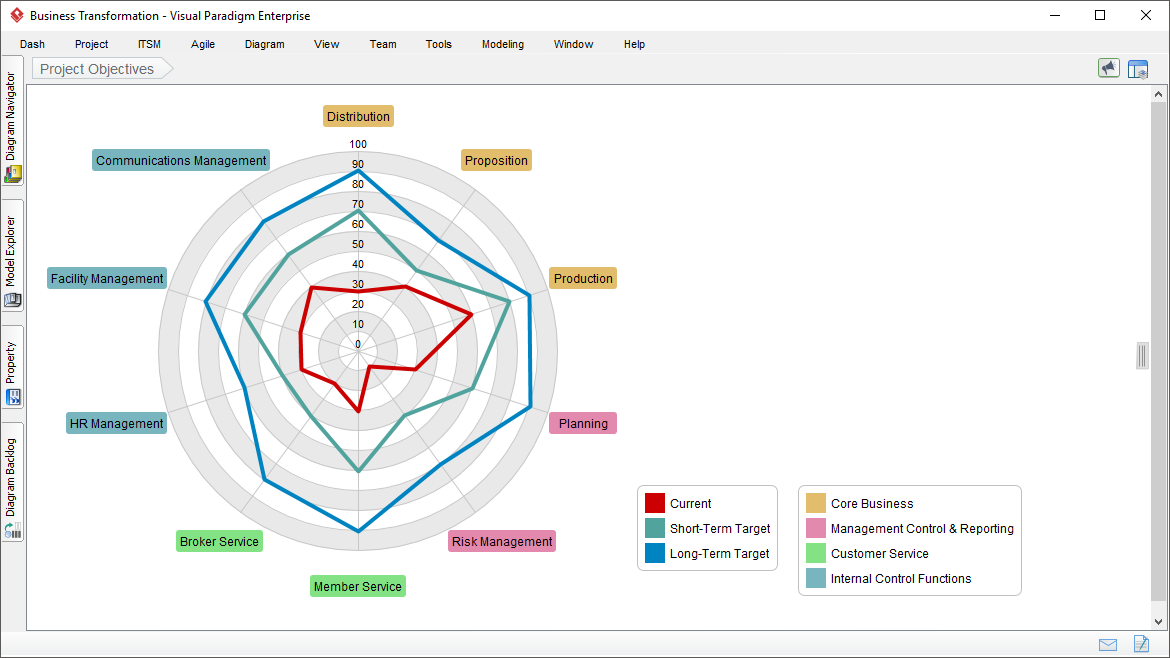Easy-to-use Radar Chart software tool to create any kind of radar chart and spider chart.

What is the capability level of your development team? Which part of your team requires strengthening or optimization? What is the focus areas that will support your development activities? By drawing a radar chart (a.k.a spider chart), you can easily find answers to all these questions.
